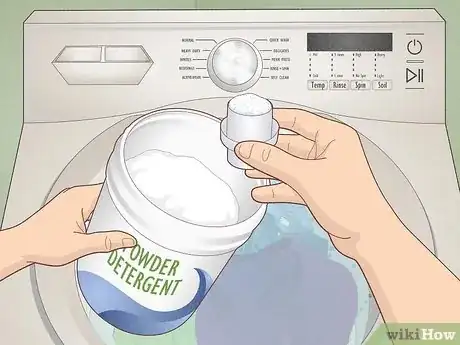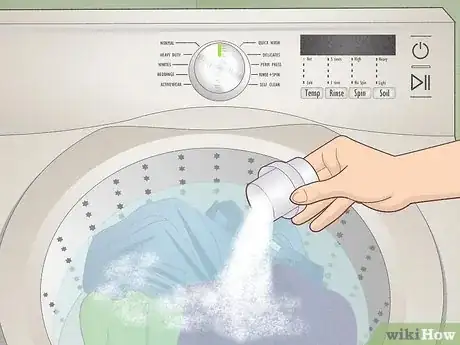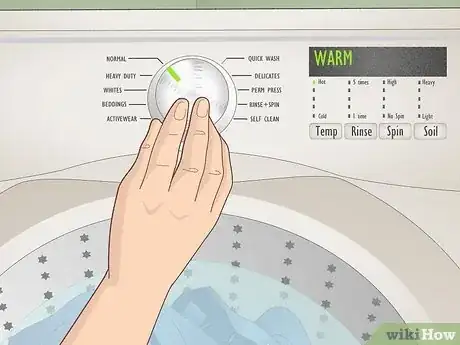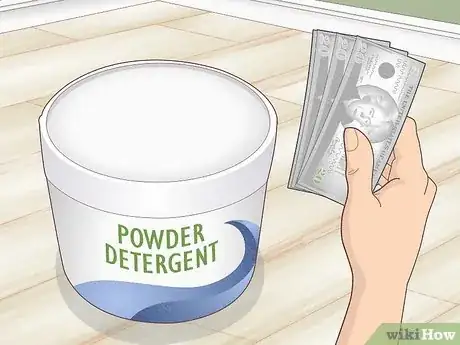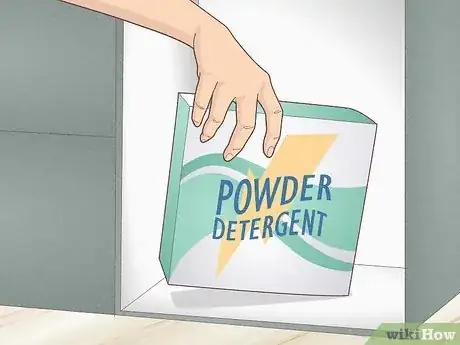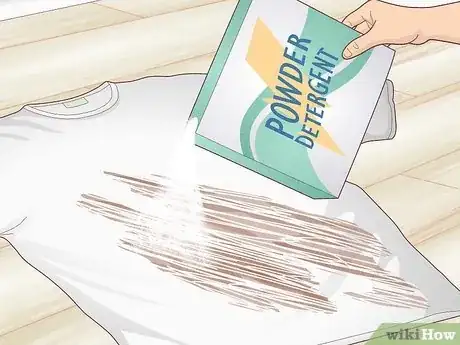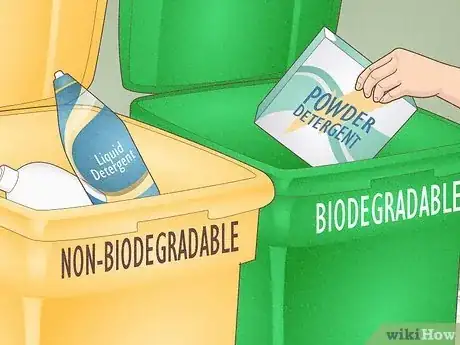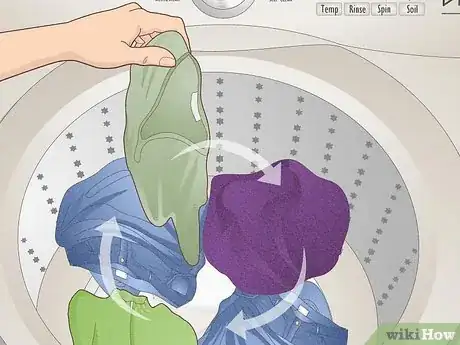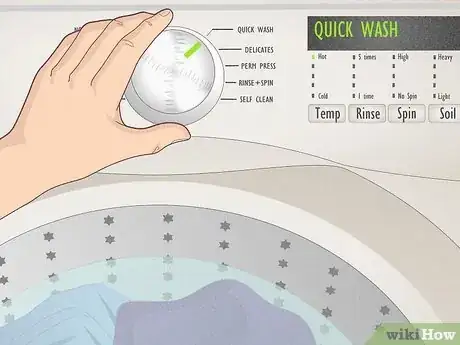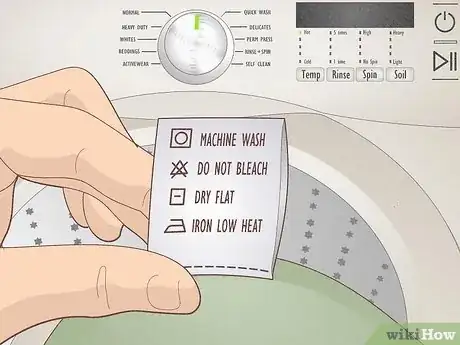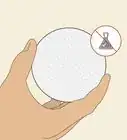This article was co-authored by wikiHow staff writer, Eric McClure. Eric McClure is an editing fellow at wikiHow where he has been editing, researching, and creating content since 2019. A former educator and poet, his work has appeared in Carcinogenic Poetry, Shot Glass Journal, Prairie Margins, and The Rusty Nail. His digital chapbook, The Internet, was also published in TL;DR Magazine. He was the winner of the Paul Carroll award for outstanding achievement in creative writing in 2014, and he was a featured reader at the Poetry Foundation’s Open Door Reading Series in 2015. Eric holds a BA in English from the University of Illinois at Chicago, and an MEd in secondary education from DePaul University.
There are 13 references cited in this article, which can be found at the bottom of the page.
This article has been viewed 8,771 times.
Learn more...
If you’ve got piles of laundry that need cleaning but you find yourself confronted with old school powder detergent, you may be wondering what you need to do differently to get your clothes clean. Luckily, the powder stuff is just as easy to use as liquid detergent, and you may be doing your clothes a colossal favor here depending on how dirty they are! In this article, we’ll break down how to use powder detergent in a top- or front-load washing machine. We’ll also cover the pros and cons of using powder soap in case you want to make the switch in the future.
Things You Should Know
- Load powder detergent in the little drawer that pops out in your machine. Put the powder in the same container where liquid detergent goes.
- If you don’t have a container for detergent, load your clothes and pour the powder directly into the drum.
- Powder detergent is cheaper, better for the environment, and more efficient at cleaning dirt and mud stains compared to liquid detergent.
- If your clothes are covered in grease stains, avoid using powder—use a liquid detergent instead.
Steps
Adding Powder Detergent to a Washing Machine
-
1Measure out your powder detergent per the instructions. Refer to the detergent’s box to find out how much powder you need to use to clean your clothes. Typically, you should use 1/3 cup (80 mL) of powder detergent or less. Use the measuring cup that came with the detergent to weigh out the powder.[1]
- People tend to overdo it with detergent—especially powder detergent. Unless you’re washing a full load that happens to be super dirty, you normally don’t need more than 2 tablespoons (30 mL) of detergent.[2]
-
2Pour the powder into the detergent drawer if you have one. Washing machines design their detergent compartment so that you can use liquid or powder detergent.[3] If you have a little container that pops out of the machine for detergent, pour the powder into the same compartment you’d normally put liquid detergent.[4]
- On most machines, the detergent compartment is the biggest container in the drawer. It will often say “detergent,” “II,” or “2” on the soap container. The other containers are for bleach and/or fabric softener.
- Detergent compartments are super common on newer machines and front-loading washers. On top loaders, the containers are often on the rim of the drum, inside the machine.
Advertisement -
3Add the powder directly to the drum if you don’t have a drawer. If you do not have a little compartment for detergent, simply load the machine with your clothes and pour the powder into the machine.[5]
- Most older machines and a lot of top-loading machines don’t have a separate compartment for detergent.
- If you’re using a powder tablet, put it in a mesh delicates bag first and then set the bag in the machine. The bag will help the powder dissolve more evenly.
- You can do this even if you’ve got a little compartment for detergent. A lot of people do this because they’re nervous about the powder clumping up inside of their washing machine.
-
4Run your preferred washing cycle based on what you’re washing. Don’t change your wash settings based on the type of detergent you’re using. Launder your clothes the same way you would with normally would. Set the load size, choose your soil level, and select the water temperature before pressing the start button.[6]
- High-efficiency (HE) washers—which includes most machines made after 2010—automatically detect the load size and set the water level accordingly.
- Once your clothes are done washing, toss them in the dryer or hang them out to air dry.
Warnings
- Never mix powder and liquid detergent. Mixing these two together will cause the powder to cake and clump up.[14]⧼thumbs_response⧽
References
- ↑ https://www.blombergappliances.com/media/documents/manuals/compact_laundry/WM77110NBL01_USER_MANUAL_en_US.pdf
- ↑ https://www.nytimes.com/wirecutter/blog/stop-using-so-much-laundry-detergent/
- ↑ https://www.lg.com/us/support/products/documents/WM3677_Manual.pdf
- ↑ https://inthewash.co.uk/washing-machines/where-to-put-washing-powder/
- ↑ https://www.the-sun.com/lifestyle/2693202/washing-powder-machine-drum-cleaning/
- ↑ https://www.bobvila.com/articles/washing-machine-settings/
- ↑ https://www.bobvila.com/articles/liquid-vs-powder-detergent/
- ↑ https://www.bobvila.com/articles/liquid-vs-powder-detergent/
- ↑ https://www.apartmenttherapy.com/powder-vs-liquid-detergent-37124579
- ↑ https://www.thekitchn.com/liquid-vs-powder-detergent-whats-the-difference-23438064
- ↑ https://www.bhg.com/homekeeping/laundry-linens/tips-checklists/how-to-load-a-washer/
- ↑ https://www.cnet.com/home/kitchen-and-household/washing-machine-settings/
- ↑ https://www.cleanipedia.com/gb/clothing-care/washing-symbols-explained.html
- ↑ https://www.cleaninginstitute.org/sites/default/files/assets/1/Page/HE.pdf
